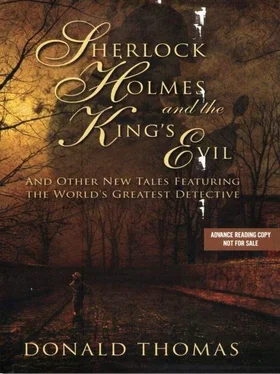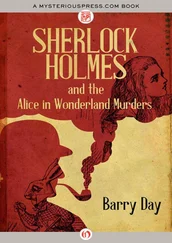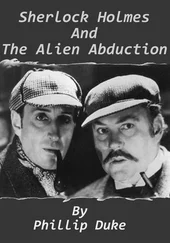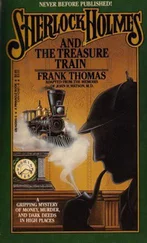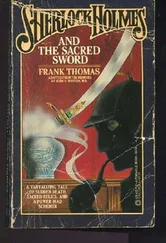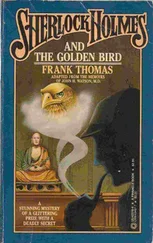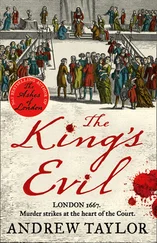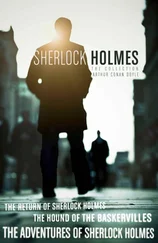“Our Home Secretary was in no more danger than I,” he said gently. “By his coolness he drew their fire and gave us their positions before they could do us any damage.”
“And if they had used the Mausers first?”
“The gunmen could not aim without moving the curtain. The moment a Mauser barrel appeared, he would have been thrown behind a convenient steel screen. One was already in position. Happily, this was not the case.”
The secret of the “firing-squad trick,” performed twice nightly to great applause by Chung Ling Soo on the stage of the Wood Green Empire, was now revealed to me. It required a small alteration in the mechanism of a rifle. The barrel and its bullet were sealed off from the detonation. The gases and the force of the explosion were directed down the tube running along under the barrel of the rifle, the gun’s safety valve and a convenient place otherwise for keeping a cleaning rod. By the time that an assassin suspected such a trick, it would be too late.
As we sat in the aftermath of cordite fumes, I knew at once the answer to the mystery of the soldering-iron fumes at the breakfast-table and Holmes hollow-eyed from lack of sleep. Of course he had spent the night with brother Mycroft or the Wonderful Chinese Conjuror, preparing three or four Lee Enfield rifles for delivery to Jubilee Hall.
I cannot conclude without adding that some of the actors in the dramas of Houndsditch and Sidney Street were to be heard of again, not least the Home Secretary whose fame was to echo across the world. Chung Ling Soo, Wonderful Chinese Conjuror, fell victim to his own cleverness. Constant removal of his rifle’s breech-block at every performance had worn the mechanism dangerously. One night, the bullet in the barrel was accidentally fired. Our benefactor fell dying on the stage of the Wood Green Empire Music Hall before his Saturday night audience on 23 March 1918.
As for Peter the Painter, it was certain that before his arrival in Paris, he had been a medical student in his native Russia and that he returned there from Paris soon after the battle in London. Meantime he had worked as a theatrical scene painter and thereby acquired his nickname. To avoid being conscripted into the army of the Tsar in 1914, he travelled to Germany and was not heard of again publicly until the Communist Revolution of 1917 brought him back to Petrograd.
I have before me a cutting from The Times of 14 April 1920. It was Sherlock Holmes who noticed a letter from Russia and read it out to me at the breakfast table. Its author signed himself only as “S.” He revealed that a list of 189 workers had been published in Moscow, men who had been shot on the orders of the Extraordinary Committee for Combating Counter-Revolution. Their crime had been to hold a mass meeting in Petrograd, at the Poutiloff factory, where they denounced the Commissars and demanded “bread and liberty.” They accused the Bolshevists of offering them only, “prison, the whip, and bullets,” denying them even “the small political liberties enjoyed under the Tsarist regime.”
As the paper reported, Piatkoff, “the notorious Peter the Painter of Sidney Street fame,” had been despatched from Moscow to supervise the wholesale execution of these dissidents. Before being executed, they were informed that their crime had been to sully the name of liberty, which their great leader Lenin had re-defined as meaning the self-discipline of the proletariat.
I could not but shudder at this and at the name of the man who had taken up the trade of executioner. He was not the only ghost to haunt the future. Small wonder that when the Soviet Union created its secret service, the “Cheka,” it appointed as chairman the cousin of “The Limping Man,” Yoshka Sokoloff, who had died in the battle of Sidney Street. The new chairman, added The Times report, was “one of the cruellest of Cheka officers during the early years of the Terror.”
V. The Case of the Zimmermann Telegram
For many years after the events which I am about to describe, the papers of Sherlock Holmes relating to them were lodged in the most secure bank vault in the City of London. I held one key to the black metal deed-boxes, a member of His Majesty’s Privy Council held the other. Neither of us could open them alone. Among the contents were letters, telegrams and folded parchments tied with pink ribbon, like the confidential brief of King’s Counsel in a leading criminal trial.
Some of these folded briefs bore a few words written by Holmes himself in black ink on their outer surface. One of them was dated 1917 and had the name “Arthur Zimmermann” written upon it with the instruction “Twenty years.” That is the period for which Holmes and I were sworn to secrecy concerning the Great War of 1914-18. Our promise had been given to the First Sea Lord of the Admiralty, at Buckingham Palace, as all Europe careered into the abyss in August 1914. With the passing of time and the consent of His Majesty’s Government the contents of those papers need no longer remain secret.
I had never expected that his records of our war against the German Empire would have survived the domestic bonfires of my friend’s final days. Surely he would have burnt this! Surely, surely he would have destroyed that! But I was quite wrong. There they lie, untouched among other letters and memoranda which he made no effort to conceal.
Perhaps he was satisfied that a certain telegraph message which gives its title to the present story would mean nothing to those who chanced to find it. I have it before me now. It is printed on a Western Union telegram form and it bears the mast-head of that company across the top of its page. It is dated 19 January 1917 and has been wired from Washington to Mexico City, via Galveston, Texas. You may now read it, if you choose. Though it is a little in advance of my narrative, it will illustrate how daunting can be the appearance of a diplomatic cipher from the intelligence service of a great world power. Imagine, if you will, that the lives of millions of people and the fate of the world depend upon your unaided ability to turn the following equation into plain and readable prose within the next two or three hours.
TO GERMAN LEGATION
MEXICO CITY
Charge German Embassy
Washington 19 January 1917
Via Galveston
130 13042 13401 8501 115 3528 416 17214 6491 11310 18147 18222 21560 10247 11518 23677 13605 3494 14936 98092 5905 11311 10392 10271 0302 21290 5161 39695 23571 17504 11269 18278 18101 0317 0228 17694 4473 23264 22200 19452 21589 67893 5569 13918 8958 12137 1333 4725 4458 5905 17166 13851 4458 17149 14471 6706 13850 12224 6929 14991 7382 15857 67893 14218 36477 5870 17533 67893 5870 5454 16102 5217 22801 17138 21001 17388 7446 23638 18222 6719 14331 15021 23845 3156 23552 22096 21604 4797 9497 22464 20855 4377 23610 18140 22260 5905 13347 20420 39689 13732 20667 6929 5275 18507 52262 1340 22049 13339 11265 22295 10439 14814 4178 6992 8784 7632 7357 6926 52262 11267 21100 21272 9346 9559 22464 15874 18502 18500 17857 2188 5376 7381 98092 16127 13486 9350 9220 76038 14219 6144 2831 17920 11347 17142 11264 7667 7762 15099 9110 10482 97556 3569 3670
Bernstorff.
Such is the complete text of this extraordinary document. I will tell you as a clue that no single number corresponds to the same letter of the alphabet on every occasion, though entire words may sometimes be identical. The number “7” may be “a” on one occasion and “q” on another, and “h” on the third. What lies behind this sequence of numbers is an infinitely variable series of ciphers.
Sherlock Holmes was one of the few men on earth who could break the secret of such a transmission within a few hours. His colleagues in Admiralty Intelligence were an unpredictable company of naval officers, classical scholars from the best universities, puzzle-book addicts, eccentrics of many kinds. There were mathematicians, and pioneers of symbolic logic, among them pupils of the late Rev C. L. Dodgson, better known to fame as “Lewis Carroll.” Holmes several times remarked that had we been able to enlist the creator of Alice, we should have given German intelligence “cards, spades and a beating,” from the first day of the war to the last.
Читать дальше
